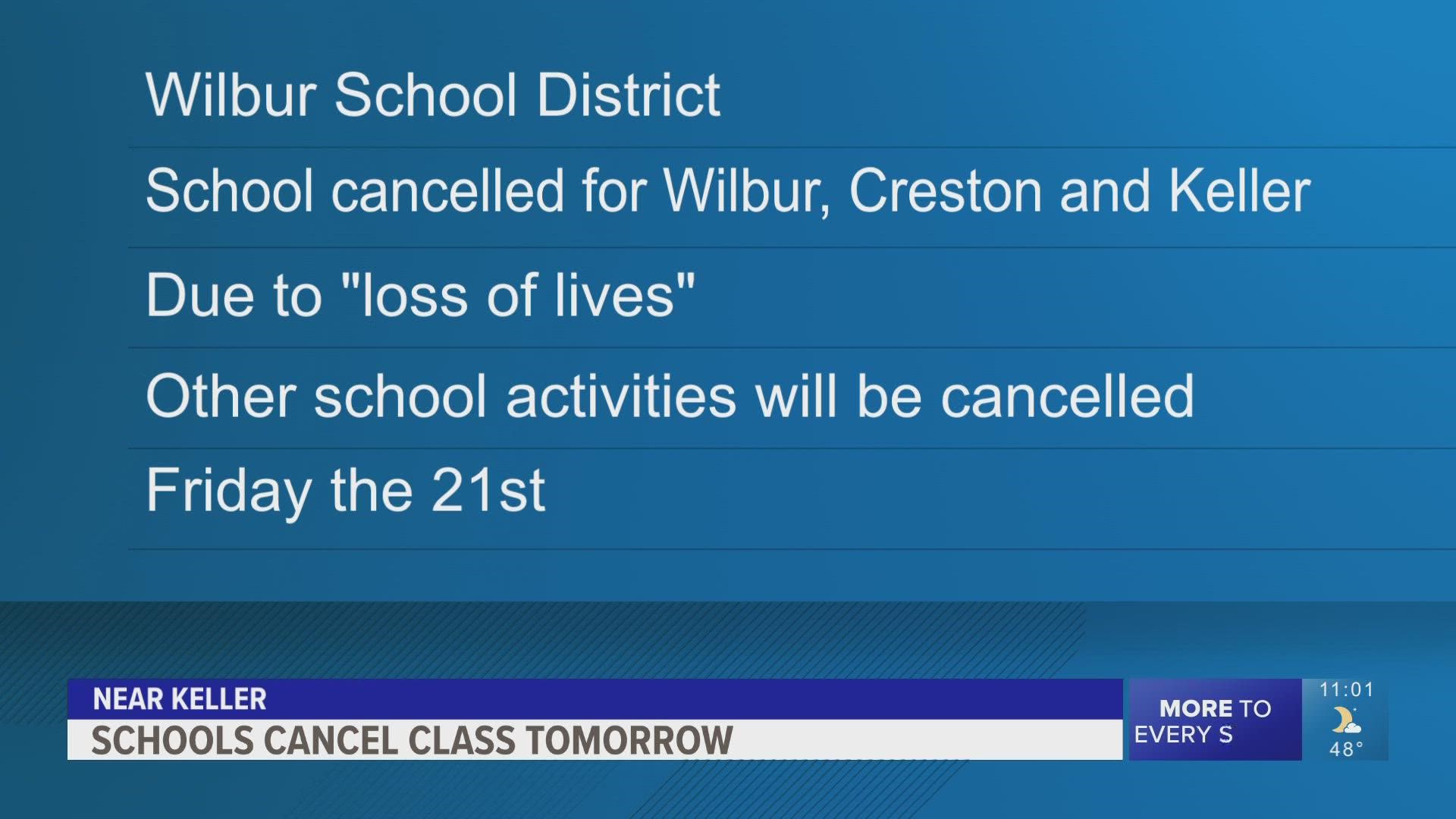Consequences Of Fragmenting The Keller School District

Table of Contents
Negative Impacts on Student Achievement
School district restructuring, especially fragmentation, significantly threatens the quality of education within the Keller ISD. The potential negative impacts on student achievement are profound and multifaceted.
Reduced Educational Resources
Fragmenting the Keller School District would likely lead to smaller school sizes, drastically reducing the resources available to students. This impacts numerous aspects of their educational experience.
- Loss of specialized teachers: Smaller districts may struggle to afford specialized teachers in areas like advanced math, science, or the arts.
- Fewer elective options: A reduced student population will make it difficult to offer a wide variety of elective courses, limiting student exploration and interests.
- Increased class sizes: Smaller budgets might necessitate larger class sizes, hindering individualized attention and personalized learning.
- Reduced funding for technology and resources: Smaller districts often have less access to funding for up-to-date technology, learning materials, and essential resources.
Disrupted Learning Environments
The disruption caused by school fragmentation extends beyond resources; it directly impacts the learning environment itself. Established learning communities and support systems could be irrevocably damaged.
- Increased administrative burden: Creating new administrative structures and systems within fragmented districts consumes resources that could be invested in education.
- Loss of continuity in curriculum and teaching methods: Inconsistent curriculum and teaching approaches across newly formed districts lead to learning gaps and inconsistencies.
- Challenges in transferring student records and credits: The administrative complexities of transferring student records between newly formed districts cause delays and potential disruptions for students.
Inequity in Educational Opportunities
Perhaps the most alarming consequence of school district fragmentation is the potential for inequitable distribution of resources, leading to disparities in educational quality.
- Disparities in funding: Newly formed districts may not receive equitable funding, creating a significant disadvantage for some students.
- Teacher quality: Smaller districts may struggle to attract and retain high-quality teachers, leading to a decline in teaching standards in certain areas.
- Access to advanced programs: Advanced placement courses, dual credit programs, and other enrichment opportunities may be unavailable or limited in smaller, fragmented districts.
Detrimental Effects on the Community
The consequences of Keller ISD fragmentation extend far beyond the classroom, significantly impacting the broader community.
Weakened Community Bonds
A unified school district fosters a strong sense of community and shared identity. Fragmentation risks fracturing this essential bond.
- Reduced parent involvement: Parents may feel less connected to their schools when districts are divided, leading to decreased participation in school activities and governance.
- Loss of collaborative community events and initiatives: District-wide events and programs that bring the community together could be lost or diminished.
- Increased competition between fragmented districts: Competition for resources and students between newly formed districts can create division and animosity.
Increased Political Division
The very process of school district restructuring is often highly contentious, creating lasting divisions within the community.
- Increased political infighting: The debate surrounding fragmentation can lead to intense political battles and polarization.
- Erosion of trust in local government: The fragmentation process can erode public trust in local officials and institutions.
- Long-term damage to community relationships: The divisions created by fragmentation can persist for years, harming community cohesion and cooperation.
Significant Financial Implications
The financial implications of fragmenting the Keller School District are substantial and potentially devastating.
Increased Administrative Costs
Establishing new school districts incurs significant administrative overhead, placing a greater burden on taxpayers.
- New administrative staff: Each new district requires its own administrative staff, increasing personnel costs.
- Separate budgets and accounting systems: Maintaining separate budgets and accounting systems for multiple districts is expensive and inefficient.
- Duplicated services: Services that could be shared across a unified district are duplicated, increasing overall costs.
- Increased legal fees: The legal complexities of school district restructuring can result in substantial legal fees.
Loss of Economies of Scale
A larger district like Keller ISD benefits from economies of scale. Fragmentation eliminates these cost savings.
- Reduced purchasing power: Smaller districts have less purchasing power, leading to higher costs for supplies, equipment, and services.
- Difficulty attracting and retaining qualified staff: Smaller districts often struggle to compete with larger districts in attracting and retaining qualified teachers and staff.
- Potential cuts to vital programs: Increased costs and reduced resources might necessitate cuts to essential educational programs and services.
Negative Impact on Property Values
Uncertainty surrounding school district fragmentation can negatively impact property values.
- Investor uncertainty: The uncertainty surrounding the future of the schools can deter investors and reduce property demand.
- Decreased demand for properties: Concerns about the quality of education in newly formed districts can lead to decreased demand for properties in the area.
- Potential property tax increases: Smaller districts may need to increase property taxes to fund their operations, impacting homeowners.
Conclusion
Fragmenting the Keller School District carries substantial risks, with potential negative consequences for student achievement, community cohesion, and the district's financial health. The potential loss of resources, increased administrative burdens, and disruption to established learning environments should be carefully considered. We urge community members to actively participate in the discussion surrounding the future of the Keller School District and to advocate for solutions that preserve the strength and unity of our schools. Let's protect our shared investment in the future by preserving the Keller School District and preventing its fragmentation. The long-term consequences of school fragmentation far outweigh any perceived benefits. Let's work together to maintain the excellence of the Keller ISD.

Featured Posts
-
 Legendary Actress Priscilla Pointer Dead At 100 A Career Retrospective
May 02, 2025
Legendary Actress Priscilla Pointer Dead At 100 A Career Retrospective
May 02, 2025 -
 Is Ripple Xrp The Next Millionaire Maker Cryptocurrency A Realistic Assessment
May 02, 2025
Is Ripple Xrp The Next Millionaire Maker Cryptocurrency A Realistic Assessment
May 02, 2025 -
 Blue Origin Rocket Launch Cancelled Subsystem Issue Delays Mission
May 02, 2025
Blue Origin Rocket Launch Cancelled Subsystem Issue Delays Mission
May 02, 2025 -
 The Donkey Roundup Rocking The Heart Of Southern California
May 02, 2025
The Donkey Roundup Rocking The Heart Of Southern California
May 02, 2025 -
 Graeme Souness Premier League Favourite Player Revealed
May 02, 2025
Graeme Souness Premier League Favourite Player Revealed
May 02, 2025
Latest Posts
-
 Nostalgia Trip Sony Brings Back Retro Ps Console Themes For Ps 5
May 03, 2025
Nostalgia Trip Sony Brings Back Retro Ps Console Themes For Ps 5
May 03, 2025 -
 Jw 24 Dlyl Shaml Hwl Blay Styshn 6
May 03, 2025
Jw 24 Dlyl Shaml Hwl Blay Styshn 6
May 03, 2025 -
 Ps 5 Gets A Blast From The Past Classic Play Station Console Themes Return
May 03, 2025
Ps 5 Gets A Blast From The Past Classic Play Station Console Themes Return
May 03, 2025 -
 Unreleased 2008 Disney Game Surfaces On Ps Plus Premium
May 03, 2025
Unreleased 2008 Disney Game Surfaces On Ps Plus Premium
May 03, 2025 -
 Register For The Sony Play Station Beta Program Full Requirements Explained
May 03, 2025
Register For The Sony Play Station Beta Program Full Requirements Explained
May 03, 2025
